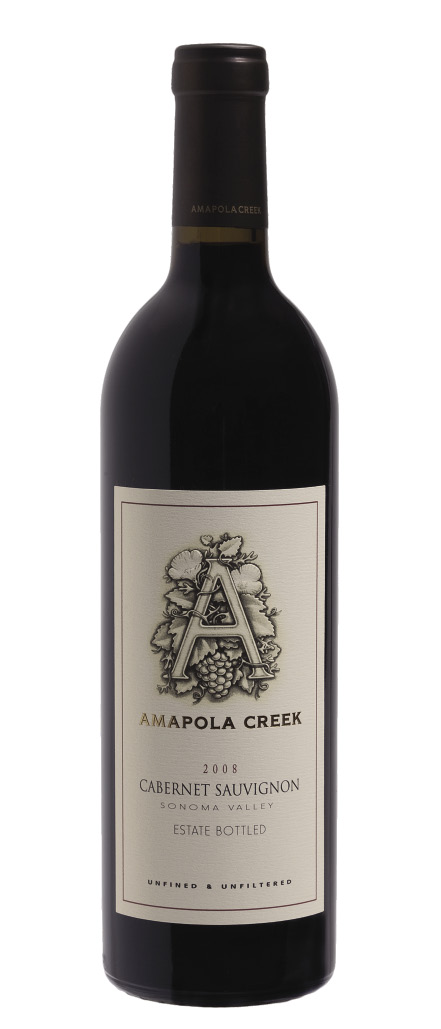- Home
- Media Kit
- Current Issue
- Past Issues
- Ad Specs-Submission
- Ad Print Settings
- Reprints (PDF)
- Photo Specifications (PDF)
- Contact Us

![]()
ONLINE


Richard Arrowood
The Strength of Sonoma
Editors’ Note
Richard Arrowood is an iconic winemaster who has been making wine exclusively in Sonoma County for 47 years. From 1974 until 1990, he created the wines for Chateau St. Jean, where he developed the first vineyard designates produced in Sonoma County. He and his wife, Alis, founded Arrowood Winery with the 1985 vintage where he made an extraordinary 22 different small-lot varietals and vineyard designates. Arrowood was the winemaster at Arrowood Winery until June 2010, when he left to devote himself full-time to making wines for their new winery, Amapola Creek Vineyards & Winery.
Winery Brief
Amapola Creek (www.amapolacreek.com) is located just north of the town of Sonoma, on the Arrowoods’ 100-plus-acre estate. The 20 acres of vineyards are spread from 350 to 1,000 feet above the valley floor on a western-facing slope at the top of the Mayacamas Mountains. The vineyards are CCOF organically certified and managed by Phil Coturri, who has been a longtime proponent of organic farming in Sonoma County. Amapola Creek produces limited amounts of Estate Cabernet Sauvignon, Joseph Belli Vineyards Chardonnay, and old vine Zinfandel from Amapola Creek’s neighbor, the historic Monte Rosso Vineyard, planted in the 1890s. Amapola Creek, named for the Spanish word for “poppy,” runs through the Arrowoods’ estate where Richard and Alis planted their vineyards using the most advanced organic methods in 2000, and Richard made the winery’s first vintage in 2005. Amapola Creek is an ultra-premium winery in a state-of-the-art facility designed to produce just 3,000 handcrafted cases annually.
What was the initial vision for Amapola Creek and how has the business evolved over time?
The first thoughts Alis and I had were to create a focus on quality above all for Sonoma Valley. We have a great area here from which to grow grapes – Sonoma Valley in California is where commercial viniculture began in this country.
My focus was to try to get back to making a handful of fine gems and not wheelbarrows full of rhinestones. If you keep it small and focused, you can do that.

Fox Trot Vineyard
The smaller you are, of course, the more limited you are in having a chance to blend it out. But if you have enough faith in growing the best vines you possibly can – it’s not growing grapes but growing vines – and you maintain a sharp focus on that, you don’t have to worry about stubbing your toe.
Mother Nature is always going to throw you curve balls. I would love to say that 2012 would be the vintage that I had always hoped for, and it is close; it was probably one of the finest vintages I’ve seen in my 47 years of producing wines. But there is always room for improvement, although it’s tough to tell you if there would be any room for improvement from 2012 because that was about as ideal as it could be.
Mother Nature will do what she will, but you rely on your experience to make things better if you have curve balls thrown at you. While every vintage has challenges, every vintage also has great opportunities.
How challenging is it to differentiate and show what makes a specific brand unique in this crowded marketplace?
You have to get out there and push it. There is a plethora of brands and the only way you are going to have any success is if the consumer knows your name and can associate it with your brand and with quality.
If you can continue to produce wines that are uniquely consistent and of top quality, people will follow that.
We have a 3,000-case use permit and we haven’t even bottled that yet. We’re probably around 2,500 cases – we’ll get to 3,000 when we start bottling the 2012 vintage.
You have to remain focused and believe you can overcome what is happening in the marketplace – and I do.
Our wines can compete with the best of them from other areas and I don’t think we have to charge $400 a bottle.

Amapola Creek Cabernet Savignon
How do you maintain reasonable price points while delivering a great product?
At best, we’re probably breaking even on most of the Cabernet Sauvignon we sell, but I want people to feel comfortable and to make ours more of a household name.
Of course, we won’t be an everyday beverage for most people, but the only way we can make this work is to get more direct-to-consumer and that’s what we’re working on – it’s about getting up to that 3,000-case mark.
If we can sell 50 percent or more of our product direct-to-consumer, then the averages will work out and we can make a nice profit. But if we get greedy, we get in trouble.
To be frank, we are talking about fermented grape juice. If the magician starts to believe the magic, then you have problems.
Do you know early in the process what your final product will be like?
Once you know where the grapes are being grown, your terroir, and what to expect from that terroir, then you have a pretty good semblance of the consistent quality you will be able to generate year in and year out no matter what Mother Nature throws at you.
Has technology impacted the winemaking process or is it still much the same as it was in the early days?
I believe in science and technology. However, because we’re producing primarily red wines like Cabernet Sauvignon and a bit of Chardonnay, we don’t need a lot of super modern technology. I believe in letting the wines make themselves and only doing what is necessary to avoid taking anything away.•